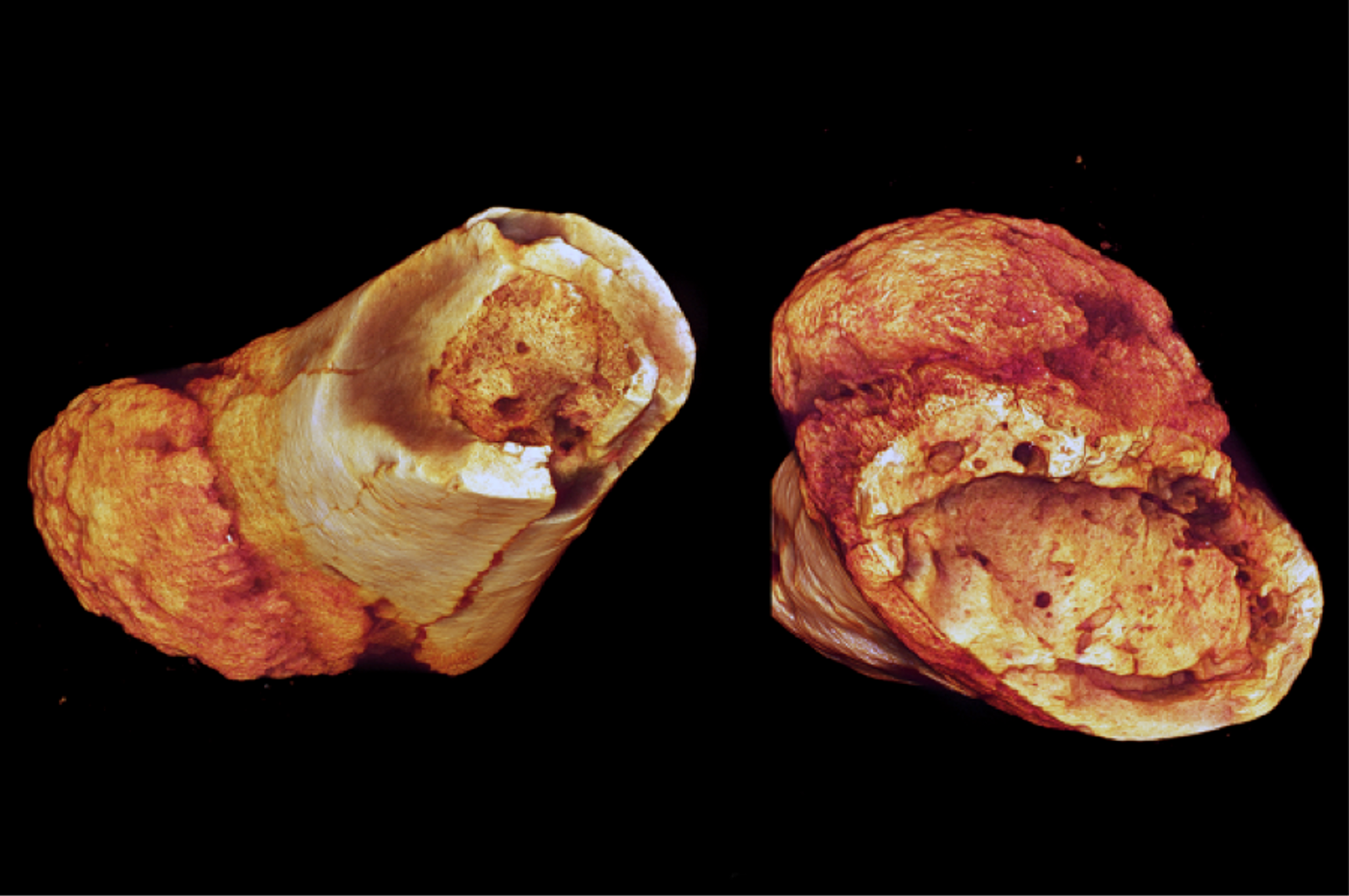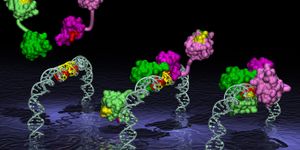Cancer is thought to be an affliction of modern age – a result of exposure to environmental and dietary carcinogens that were absent for our prehistoric relatives. However, two recent discoveries have upturned this notion completely – cancer appears to have plagued our ancestors as far back as 2 million years ago.

Million year old fossilized cancer in metatarsals | Image: Edward Odes (Wits)
Scientists from the University of the Witwatersrand's Evolutionary Studies Institute and the South African Centre for Excellence in PalaeoSciences published two consecutive papers that described bone cancer in a
1.7 million year old foot fragment and a
2 million year old vertebrae.
In the first case, the bone cancer in the metatarsal of foot fragment came from the site of Swartkrans in South Africa. Because it was a fragment, the scientists can only conclude that belonged to a hominin species, a bipedal human relative. "Due to its preservation, we don't know whether the single cancerous foot bone belongs to an adult or child, nor whether the cancer caused the death of this individual, but we can tell this would have affected the individuals' ability to walk or run," said Bernhard Zipfel, a Wits scientist who specializes in feet and locomotion of early human species. "In short, it would have been painful."
In the second case, scientists found evidence of bone cancer in a vertebrae of an Australopithecus sediba child, from Malapa in South Africa. “The presence of a benign tumor in Australopithecus sediba is fascinating not only because it is found in the back, an extremely rare place for such a disease to manifest in modern humans, but also because it is found in a child. This, in fact, is the first evidence of such a disease in a young individual in the whole of the fossil human record,” said Patrick Randolph-Quinney, a Wits scientist and an author of both published papers.
Before this discovery, the oldest archeological record of cancer dated back to 120,000 years ago. Now, this evidence has completely blasted the timeline of cancer to millions of years ago, indicating this disease is not exclusive to modern times.
"Modern medicine tends to assume that cancers and tumors in humans are diseases caused by modern lifestyles and environments. Our studies show the origins of these diseases occurred in our ancient relatives millions of years before modern industrial societies existed,” said Edward Odes, an author of both papers.
What does prehistoric bone cancer look like? Surprisingly, much like what bone cancer looks like now. "We tested this particular bone with a known modern human osteosarcoma specimen, and it looked identical," said Odes. "Millions of years old, and you wouldn't be able to tell it apart."
That osteosarcoma hasn’t shown major signs of evolutionary changes over such a long period of time is perplexing. But it could potentially serve as a clue to which genes are involved in this cancer. Furthermore, finding out why these genes haven’t been subjected to evolutionary pressure may expand our knowledge on how these cancers begin.
What’s clear from the discoveries is that cancers and tumors are more complex beyond what we previously imagined. And for better or for worse, it appears that cancer isn’t a byproduct of industrialization. As Quinney wrote, “Even if we have very healthy, perfect lifestyles we still have the capacity for cancer. It is an inherent part of our evolutionary process."
Additional sources:
Wits press release,
CNN









